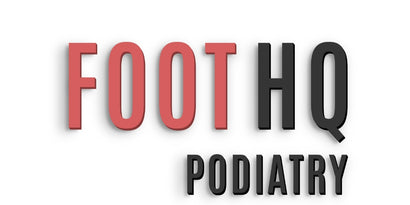SERVICES

Effective Treatments For Shin Splint Pain
February 07, 2022 4 min read
🔥 SHIN SPLINTS FROM HELL 🔥
Medial tibial Stress Syndrome (MTSS) results in pain along the inside (medial) and front (anterior) of the tibia bone (shin) that deeply aches, especially when moving your foot upward.

Old or incorrect footwear is a common cause for this problem! Exercise appropriate footwear is key as not all shoes are made the same. A hiking boot has a lot more traction than a walking shoe, and a basketball shoe has a lot more support on the outside of your foot than a running shoe. All higher quality shoes are designed for different purposes in mind and are attempting to optimise your foot biomechanics.

As running is such a high impact sport, running shoes have much more shock absorption than regular shoes because they are designed for higher loads and greater impacts than a walking shoe. Walking shoes can also be disguised as running shoes but their giveaways are in their design and poor quality materials used. The best materials for shock absorption have been designed to be quite spongy and airy, and do not easily crack or break.
A heel or sole that is too hard will increase the risk of MTSS developing because it increases the ground reaction forces as you run or walk instead of reducing them. Likewise a sole that is too soft will cause all the stress and impact to hit your bones and joints instead. It has to be hard enough that it can take the pressure, but soft enough to relieve some of that impact from each step. They also have a slight curve (termed rocker bottom) to the sole which reduces the exertion on your tibialis anterior muscle.

Some people are at higher risk of developing MTSS due to having high arch feet are also at increased risk due to the fact they have less shock-absorbing ability. These feet are very rigid and this means they hit the ground harder than other foot types.

Flat feet are also a risk factor for developing shin splints. This is because they are also bad at shock absorbing for the opposite reason to the high arch foot. The high arch foot is rigid and doesn’t have much “give”, so it cannot adapt to surfaces well. The flat foot is very adaptive but is sometimes at the end of its “give” capacity. Like a tether that is over stretched, it can no longer keep tension. Imagine a bungee cord that has been over-stretched, when someone uses it they will hit the ground very hard.

There is a happy medium in feet where there is enough tension and rigidity to bounce off the ground as you walk efficiently, but enough flexibility and adaptability to shape your foot to different terrain and surfaces without causing stress on bones.
Usually the tibialis anterior muscle is also tight and/or overused. We see this in people doing a lot of uphill or incline walkig or running. The Tibialis anterior muscle is a very long thin muscle that is responsible for all movements that involve your foot moving upward (what we call “dorsiflexion”). Because this muscle is so small compared to the muscles at the back of the leg (like the calves), it can easily get overwhelmed.

When this muscle is overwhelmed, we find not just tightness or knots, but a slight pulling away from the outer lining of the bone the muscle is attached to (called the periosteum) which causes pain and inflammation of this area. There are also theories that micro fractures occur at this site, which is why people with shin splints are at much higher risk of stress fractures in the same area.
We see this muscle get overwhelmed in people who are in the military due to the intensity of the exercise drills they perform and the weight of the shoes they wear. You can imagine it is much harder to lift your foot up if your shoe weighs a ton! It also gets overwhelmed in people who recently increased the intensity of their exercise regime or frequency. The muscle takes time to get used to a new routine, so care must be taken to ease into new exercise programs and take care to stretch and massage afterwards.
Treatments:
- Rest, ice, compression and elevation along with anti-inflammatory drugs help with the acute phase.
- Short term management involves taping along the tibias anterior muscle. This adds extra strength to the muscle so it doesn’t have to work as hard to hold the foot up every time you walk.
- Medium term management involves a stretching regimes, massage and percussive therapy which will help begin to reduce tension in the muscle and therefore the “pull” of the muscle on the bone.
- Long term management involves looking at the biomechanics of the person and optimising their foot function. This may mean custom or semi custom orthoses, forefoot wedges, extra padding on the inside and outside of the shoes, etc. In addition to this, we have to address any issues with footwear include the fit, the function and the age of the shoe.
Leave a comment
Comments will be approved before showing up.
Subscribe
Sign up to get the latest on sales, new releases and more …
